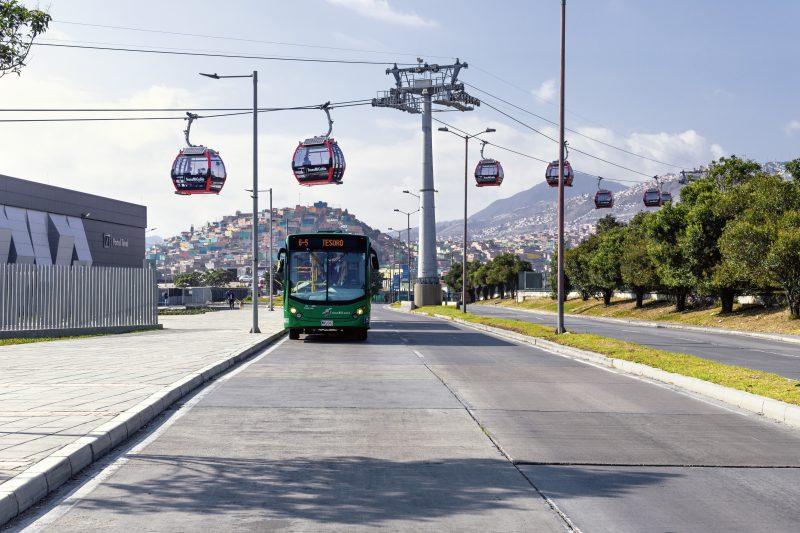Doppelmayr sustainable transport solutions across New Zealand
Garreth Hayman, CEO Doppelmayr New Zealand
To meet our 2030 and 2050 climate targets, Aotearoa must think differently about how to move its growing population.
Doppelmayr’s urban ropeway technology offers innovative, affordable and sustainable solutions that can keep our cities moving. With the ability to transport 12,000 people per hour, ropeways enhance a city’s liveability, connect harder to reach communities, integrate with existing transport infrastructure, relieve congestion and attract more people to use public transport.
Do you have examples as to where your company has done this before?
Doppelmayr has designed and delivered several public transport systems using ropeway technology, including in London, Mexico City, Luxemburg and Portland. We are currently underway with the first-ever public transit gondola for Paris which will be completed in 2025.
Our largest urban ropeway ‘Mi Teleférico’ in La Paz, Bolivia, consists of ten lines with an overall length of more than 30 kilometres. Mi Teleférico transports about 300,000 people every day as a means for getting to work and school, whilst providing access to community hubs and leisure-time activities. With more than 300 million passengers transported to date, commuters continue to benefit from significant time savings and escape from daily road congestion.

What do you mean by an integrated transport solution?
Doppelmayr’s urban ropeway solutions can be integrated into existing and future transport networks, to complement train, bus and ferry services. This includes integrated stations for easy transfers between modes and the integration with existing payment methods, such as Auckland Transport’s HOP system or the new National ticketing system.
Do you see this integration across large cities or rurally?
Most of our existing urban ropeway solutions have focused on connecting cities where high density and geographical barriers have prevented other transport expansion to take place. However, this doesn’t mean that integration isn’t possible in rural communities.
With the rise of new housing developments on the fringe of New Zealand cities – Tāmaki Makaurau Auckland in particular – we believe there is an opportunity to provide links between rural communities with their connecting cities. This is something Doppelmayr is actively pursuing.
How will this assist in emission reduction?
Over 40 per cent of Auckland’s emissions are from transport. Ropeway systems could drastically reduce this, generating less than a quarter of the greenhouse gases compared to other transport options. If used with renewable energies, ropeway operations can even be entirely carbon neutral.
How are you finding current business conditions?
Like most businesses, we have experienced the impact of rapidly rising costs over the last year and ongoing labour constraints. It’s heartening to see confidence returning to the tourism industry, which we anticipate will rebound to full strength again in the next two years. Doppelmayr will continue to support our customers over this period and ensure we have capacity to respond once they are ready to make investments.
Staff retention – difficult?
We are lucky to have a dedicated core team in New Zealand, our focus is to ensure we can retain them and provide opportunities for the future.
How hard is it to find the right staff?
While we are fortunate to attract interest from people in our industry, it can be difficult to find people with all the skills and qualifications we are looking for. We are working with key industry members to develop a qualification that will upskill and attract new people to our workforce.
Areas of growth for your company?
As mentioned above, we see public transport as a key area of growth for Doppelmayr in New Zealand. Our vision is to support the country’s sustainability targets, whilst offering affordability, liveability and creating sustained employment opportunities



